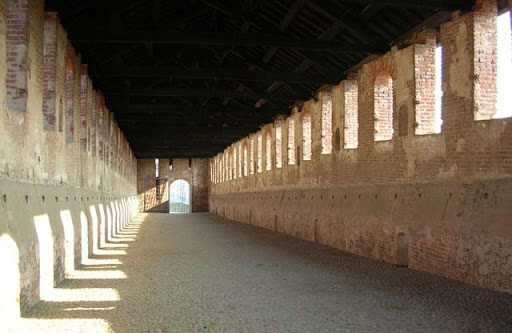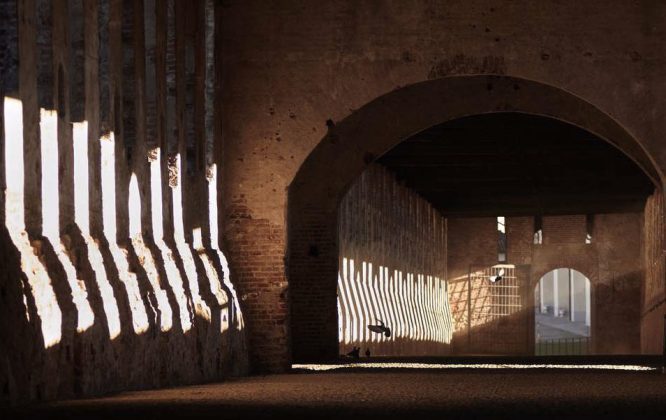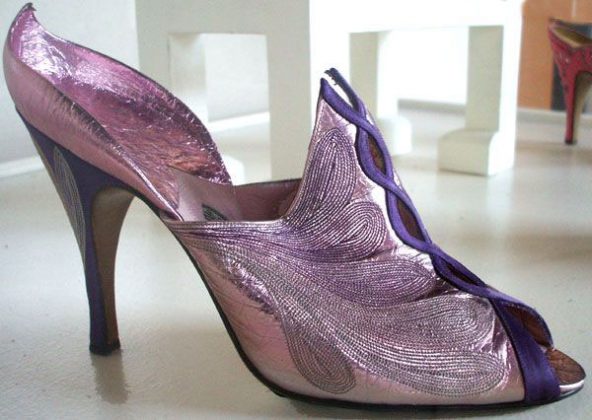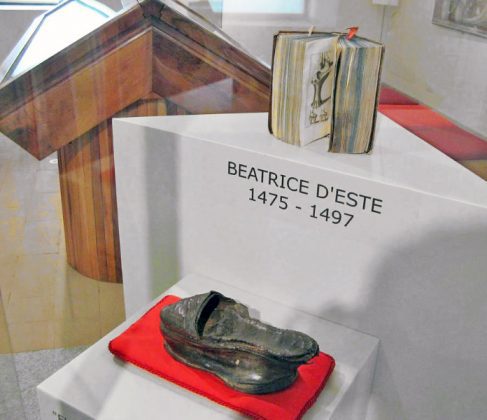A pearl of the Renaissance, a city that was nicknamed the “ideal city” by Leonardo da Vinci himself. I am not writing about Florence this time but an equally appealing town just 35 km away from Milan in the province of Pavia: Vigevano.

What to see
In the heart of Vigevano there is the so called “Covered Road”, an underground path that allowed the lords of Milan to reach the Castle of Vigevano without being seen and, above all, to escape without problems in case of emergency. Built in 1347 has really immense dimensions with its almost 170 meters long and 7 wide. It is not only about its size, despite time and the events that have seen it protagonist throughout its history, it is still a triumph of the Middle Ages so beautiful preserved to take your breath away.
Another symbol of Vigevano is the complex of The Castle and the Ducal Palace (Il Castello e il Palazzo Ducale), one of the largest fortified structures in Europe. Its bulding dates back to 1345 and it is the result of construction works which lasted over two centuries during the reigns of the Visconti and Sforza in Milan. The Castle and the Palace together occupy a surface of over 70,000 square metres that, to give you an idea, it is double the area of Buckingham Palace. Here you can also visit Leonardiana, the museum space dedicated to Leonardo da Vinci which houses important documents and manuscripts including the famous Code of Vigevano with the sketches of the ‘water machines’ and various atmospheric phenomena.
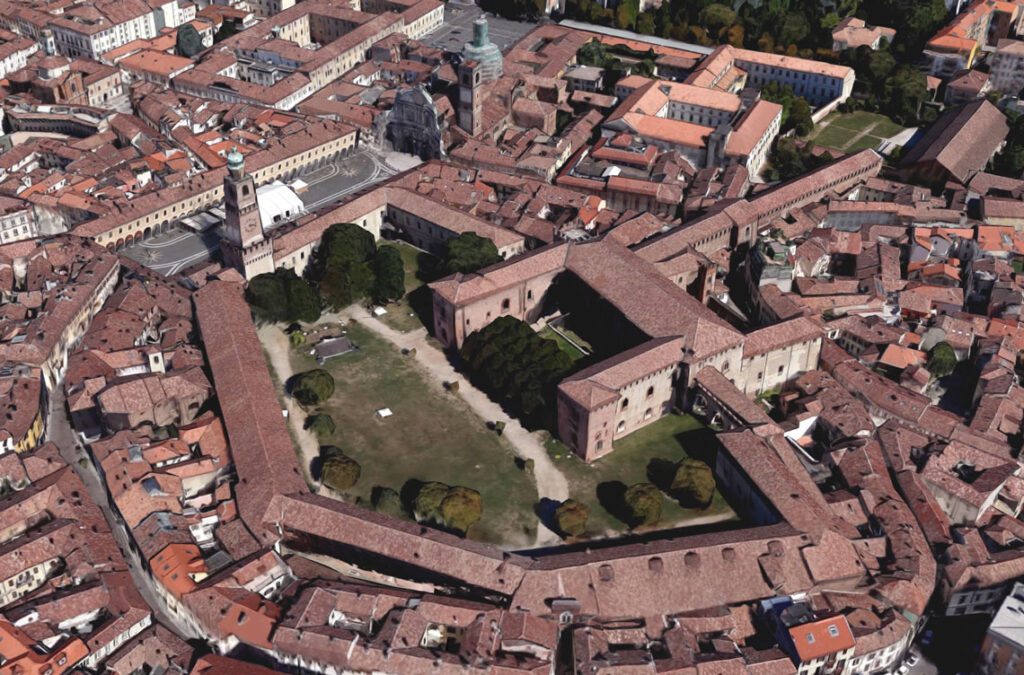
However, the main pearl of Vigevano remains the Renaissance square Piazza Ducale which is considered one of the most beautiful squares in Italy. Following the lavish marriage with Beatrice d’Este, Ludovico ordered its construction and actually moved to live in Vigevano with his wife and the whole court. To fulfill his dream of “grandeur”, and make a good impression with his illustrious guests (the King of France Charles VIII and Emperor Maximilian I of Habsburg stayed at the castle) Ludovico did not hesitate to ask for the collaboration of some of the greatest artists and architects of the time. The result is an area almost entirely surrounded by arcades and with an impressive size: it measures 134 metres in length and 48 in width.

The square served as the royal entrance to the castle and it also houses the baroque Duomo di Sant’Ambrogio.
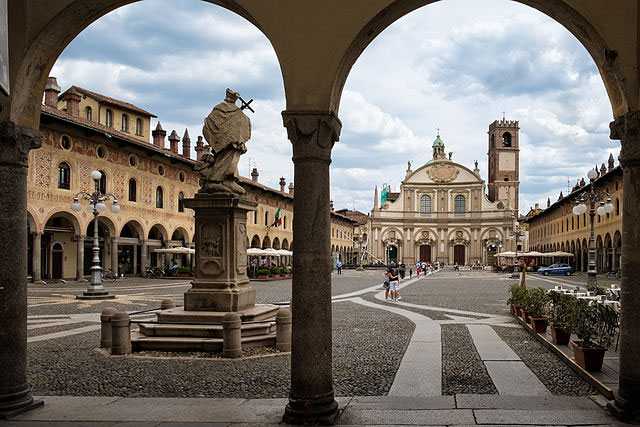
A few meters from the square there is the Bramante Tower (Torre del Bramante) that is definitely worth a visit with its breathtaking view over the whole city. The tower was built about 300 years ago and got its name in honor of the architect who finally finished its construction. The first stone of the tower was laid in 1198 but only under Ludovico il Moro, Duke of Milan, the tower take on the appeareance of today.

The city of Vigevano is also famous for being the capital of Italian footwear. The shoe making machines produced here were used all over Europe and the citizens even erected a monument with the inscription “Italian shoemaker”. Today the production market focuses mainly on luxury, the famous brand Almini produces here shoes for sheiks, with diamonds and platinum buckles, which can cost up to 14,000 euros per pair!
Shoe Museum (Museo della calzatura):
The permanent collection of the Vigevano Shoe museum is truly impressive for the number of exhibits on display, for the variety of them and above all for the punctuality in the description of the history of footwear fashion from the 15th century to the 1970s. Here are presented unique and original products, shod with memorable characters. They range from the “slipper” of Beatrice d’Este to the heel of Marylin Monroe, from the papal slipper (Pope Francis, perhaps in an excess of pauperism, has declined the traditional offer of Vigevanese footwear to the popes) to the boot with the gaiters of the Duce, from the gigantic footwear of Nba star Shaquille O’Neal to the formal sandals of the Arctic peoples.
Address: Piazza Ducale, 16, 27029 Vigevano PV
Official Website
💡 Vigevano is great for a weekend stroll, after have visited the main sights just sit to have a drink in the dehors of the main square and you’ll feel like you are back 500 years in full Renaissance.
💡 ➡ Nearby Vigevano: The wine region of Oltrepo Pavese: a little Tuscany close to Milan




